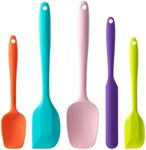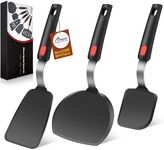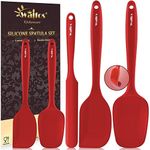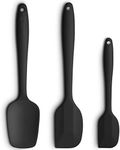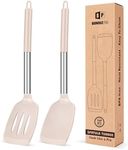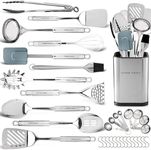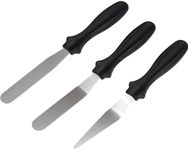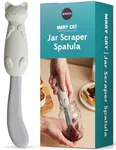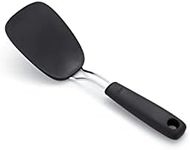Buying Guide for the Best Non Toxic Spatula
Choosing a non-toxic spatula is a smart move for anyone who wants to cook safely and avoid unwanted chemicals in their food. The right spatula will not only help you prepare meals more efficiently but also ensure that you’re not exposing yourself or your family to harmful substances. When shopping for a non-toxic spatula, it’s important to look beyond just the shape and size—pay close attention to the materials used, how easy it is to clean, and whether it suits your cooking style. Understanding the key features will help you make a choice that fits your kitchen habits and health priorities.MaterialThe material of a spatula is crucial because it determines both its safety and performance. Non-toxic spatulas are typically made from silicone, stainless steel, or wood. Silicone is popular because it’s heat-resistant, flexible, and doesn’t leach chemicals if it’s food-grade and BPA-free. Stainless steel is durable and safe, but can scratch non-stick pans. Wood is natural and gentle on cookware, but needs proper care to avoid absorbing odors or bacteria. When choosing, think about your cookware—if you use non-stick pans, silicone or wood is best. If you want something long-lasting and don’t mind a bit of weight, stainless steel is a good pick. Always check that the material is labeled as food-safe and free from harmful chemicals like BPA, phthalates, or lead.
Heat ResistanceHeat resistance refers to the temperature a spatula can withstand without melting, warping, or releasing toxins. This is important because spatulas often come into direct contact with hot pans and food. Silicone spatulas usually handle temperatures from 400°F to 600°F, while wood and stainless steel can tolerate even higher. If you frequently cook at high temperatures, such as frying or sautéing, choose a spatula with a high heat resistance rating. For baking or light cooking, a lower heat resistance is sufficient. Always check the manufacturer’s guidelines to ensure the spatula can handle your typical cooking temperatures.
Handle Design and ComfortThe handle design affects how comfortable and safe the spatula is to use. A good handle should be sturdy, easy to grip, and long enough to keep your hand away from heat. Some handles are ergonomically shaped for better comfort, while others have non-slip coatings. If you cook for long periods or have larger hands, look for a spatula with a thicker, contoured handle. For quick tasks or smaller hands, a slimmer handle may be more comfortable. The right handle will make cooking easier and help prevent accidents.
Ease of CleaningHow easy a spatula is to clean matters for both convenience and hygiene. Silicone and stainless steel spatulas are usually dishwasher safe and don’t absorb food odors or stains. Wooden spatulas need to be hand-washed and dried quickly to prevent cracking or bacteria buildup. If you want minimal maintenance, choose a spatula that’s dishwasher safe and has a seamless design (no crevices where food can get stuck). If you prefer natural materials, be prepared to spend a little extra time on care and cleaning.
Certifications and Safety LabelsCertifications and safety labels indicate that a spatula has been tested for harmful substances and meets food safety standards. Look for labels like FDA-approved, LFGB-certified, or BPA-free, which show that the spatula is safe for food contact. These certifications are especially important if you’re concerned about chemical exposure. When shopping, check the packaging or product description for these labels to ensure you’re getting a truly non-toxic product.
